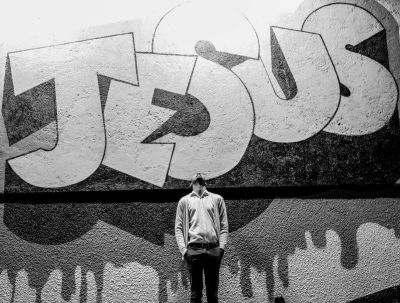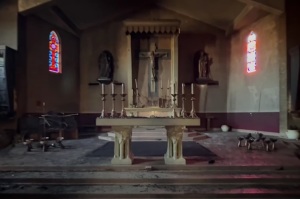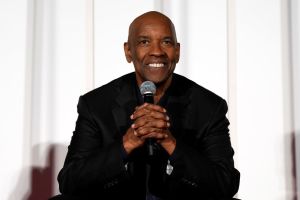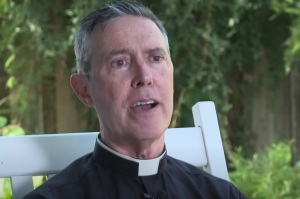The Jesus church (pt. 1)

“So many churches, yet so much violence,” observed Fox reporter Eli Steele as he rode with two pastors through the south Chicago community they served[1].
Steele’s comment took my memory back to 1974, and a conference room adjacent to a prison warden’s office.
On the other side of the table sat inmate Charles Colson, former member of the inner circle of President Richard M. Nixon. Colson had been sentenced to prison on Watergate-related charges.
I had also worked as a junior aide in the Nixon White House and had known Colson only from a distance.
Just days before, a mutual friend called from Washington, telling me Chuck had given his life to Christ. I confess that I was tempted to “disbelieve for joy.”
The caller said Colson was jailed a couple of hours from my house. Would I visit and encourage him?
I soon sat before a man who had been high on the White House totem pole. However, I knew something was different when Chuck had been brought to the prison’s visitor lobby that morning. The former haughty presidential advisor ran toward me and gave me what felt like a bone-crunching hug.
Chuck would write later in his book, Born Again, that the warden had allowed us to use his personal conference room in the hope we would talk about Watergate. But all they got was a couple of guys praying and a stabbing rhetorical question of a man just re-awakened to Christ and the importance of the Lord’s church: If there are so many churches in America why is the nation in such a moral and spiritual crisis?
When I met with Chuck that day in 1974, I had just become pastor of a small church in south Alabama. I read many books in that age when the church growth movement was gathering steam. I was bewildered by all the sure-fire strategies laid out before me.
Then it hit me: If the church is the body of Christ, it ought to do what Jesus did in His body. The problem Jesus’s disciples faced was not how to get larger numbers, but how to accommodate the crowds that came to Jesus.
I realized that what I would come to call the “Jesus Church” is the way the Lord walks and ministers now throughout the world as much as He did backwaters and bustling urban areas two thousand years ago.
I “reset” my strategy from accruing numbers to building ministry. I wondered: What did Jesus do in His incarnate body two thousand years ago that He would do in His incarnate body —the church — today?
As I studied the lifestyle and ministry actions of Jesus as revealed in the Bible, His daily functional routine emerged:
- Jesus worshipped
The Lord began His day with a worship focus, recognizing and yielding Himself to the transcendent Being of His Father.
- Jesus interceded
Jesus also launched His day with intercessory prayer.
- Jesus proclaimed God’s Kingdom.
His message centered on the importance of people yielding themselves to God’s Kingdom and its grace through repentance and acknowledgment of His lordship.
- Jesus discipled those He reached
“Making disciples” was a crucial element of Jesus’s ministry and would be basic in the Great Commission where He instructed His followers to go into the world and “make disciples,” teaching them to do everything He had taught the first disciples to do. (Matthew 28:18-20)
- Jesus served human need in the name of the Father (Matthew 25)
Jesus engaged with people and their needs daily with works that revealed the love and power of God. He lifted burdens from struggling people, ministered to their pains, and healed them. Then He commissioned His followers to do the same.
These actions were empowered by the Holy Spirit Who had anointed Jesus at His baptism. Walking in this model in the twentieth century caused me to re-examine and consider the doctrine and work of the Holy Spirit in this “post-apostolic age.”
I applied the Jesus Church model to three churches I served as senior pastor. Growth happened, sometimes at levels that brought new challenges. A greater emphasis on the ministry of the Holy Spirit disturbed some who thought I was leading the church away from its doctrinal identity. Church governance became a concern as we transitioned to a biblical elder-led style. And, in the Deep South in 1974, there was still upheaval as we opened the doors to people of all races.
In 1986, two churches were interested in calling me as senior pastor. One had 4,000 members and the other less than 120. The smaller church was dying, while the large church was booming, poised, and ready to pursue dramatic growth.
My wife and I sensed the Holy Spirit leading us to the smaller congregation, in Houston. I knew it would be the perfect place to develop the Jesus Church model. “If they are going to die, let’s go die with them,” I told my wife in an attempt at grim humor.
Yet it did not die but grew through twelve years to an average attendance of a thousand with broad-sweeping ministries. It was indeed the perfect place to apply the Jesus Church model.
“I really do believe that the local church is the hope of the world,” South Chicago pastor Corey Brooks told Eli Steele. He’s right because everything Jesus touches is transformed, including individual humans, their institutions, and communities. How can churches apply the Jesus ministry model in communities today?
We examine the practicalities of the Jesus Church in Part II.
Wallace Henley is a former White House and Congressional aide. He is now a teaching pastor at Grace Church, The Woodlands, Texas. Wallace is author of more than 20 books, including God and Churchill, and his newest, Who Will Rule the Coming 'gods: The Looming Spiritual Crisis of Artificial Intelligence.




























